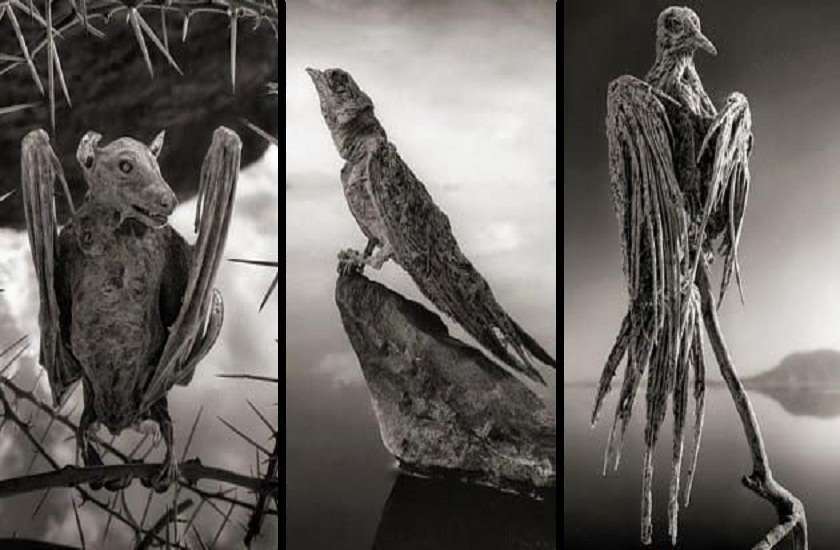

The water comes from mineral hot springs and a river, but the lake doesn't drain out to any sea or river – evaporation is how the shallow lake loses water, which can reach as high as 41 degrees Celsius (106 degrees Fahrenheit). The lake actually takes its name from the naturally-occurring blend of chemicals it contains. This raises the lake's alkalinity to far above water's normal neutral pH of 7. Lake Natron's very alkaline water has a pH of around 10.5 - too high for many animals Image: picture-alliance/dpa/Mary Evans Picture Library/A.

Ol Doinyo Lengai, an active volcano, lies not far from the lake. It owes its unusual chemistry to the surrounding volcanic geology: the minerals, particularly sodium carbonate, and salts created by volcanic processes flow into the lake from the surrounding hills. The lake's extremely alkaline water has a pH as high as 10.5, similar to milk of magnesia, a treatment used to neutralize stomach acid. But when coupled with the sight of dead animals seemingly turned to stone, the lake appears even more eerie. One of its peculiarities is that in the distance it looks as if it were covered in snow, surrounded by a white halo, the result of natro-carbonate lava that, as it cools, quickly changes colour from black to white.The scarlet waters of Lake Natron in northern Tanzania are eye-catching enough by themselves. This is definitely an ascent that requires good physical fitness, but it will fully repay the effort, with spectacular views over a surreal landscape, both towards the surrounding valleys and the interior of the crater. An incredible spectacle of breathtaking views and landscapes, barren with ash, dark with congealed lava and lunar in appearance.ĭue to the high temperatures, it is preferable to climb at night, especially the last section, which is the most demanding and very slippery, where your feet continually slide in a thick layer of ash and dark sand, with a gradient of almost 40 degrees. Approaching its shores is not easy even for humans, due to the muddy terrain, and it will be necessary to follow the steps of an expert Maasai guide, familiar with the pitfalls of this magical place.īathed in light, the mirror of its southern surface reflects the silhouette of the nearby Ol Doinyo Lengai stratovolcano, which dominates the surrounding landscape from a height of 3,000 metres, reachable after a walk of about 5 hours, through narrow passages that climb up its sides, until reaching the final lava wall that leads to the thin and dizzying edges of its crater. Only a few algae, including spirulina, three endemic species of fish and flamingos are able to adapt to such a unique environment, while for the other animals the lake’s caustic waters are fatal, often transforming the unfortunate victims into veritable calcified salt statues, due to the chemical reaction that has an embalming power. Extremely salty and alkaline, due to the presence of natron, a sodium carbonate decahydrate, similar to ammonia, it is the natural habitat of cyanobacteria, from which derives the intense pink colour of the water and the plumage of the two million dwarf flamingos that every year migrate to the edge of the lake to reproduce, making this extraordinary place the main meeting point of the entire African continent for the conservation of the species. The volcano and its surroundings preserve a unique ecosystem, of which Lake Natron is an appendage, formed by the waters that flow downstream, which are strongly alkaline and loaded with sodium.Ħ0 km long by 22 km wide, Lake Natron has a maximum depth of just 3 metres, is subject to strong evaporation, and its temperature can reach 60 degrees centigrade. Among the most spectacular volcanic landscapes in northern Tanzania, to the north of Ngorongoro and in the Great Rift Valley region, is the marvellous environmental area of Lake Natron and the stratovolcano of Ol Doinyo Lengai, “ the Mountain of God” in the Maasai language, which is still active today and rises to almost 3,000 metres.


 0 kommentar(er)
0 kommentar(er)
